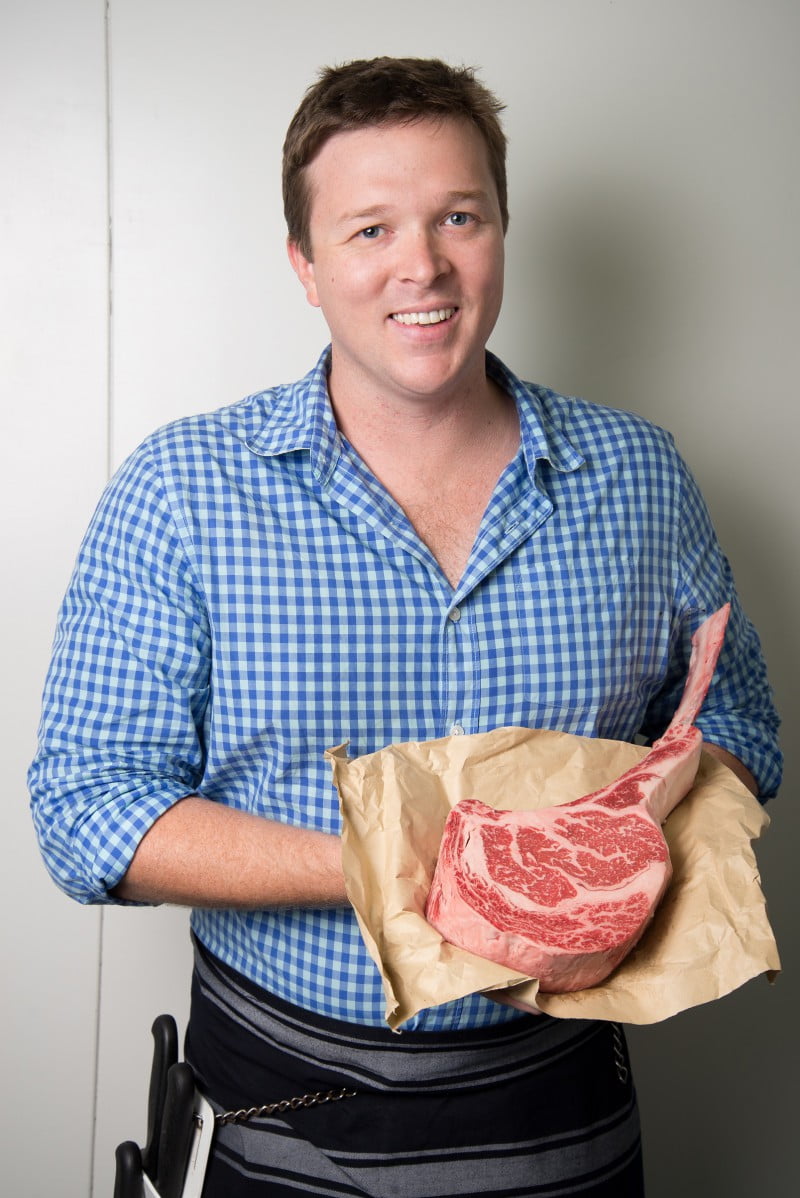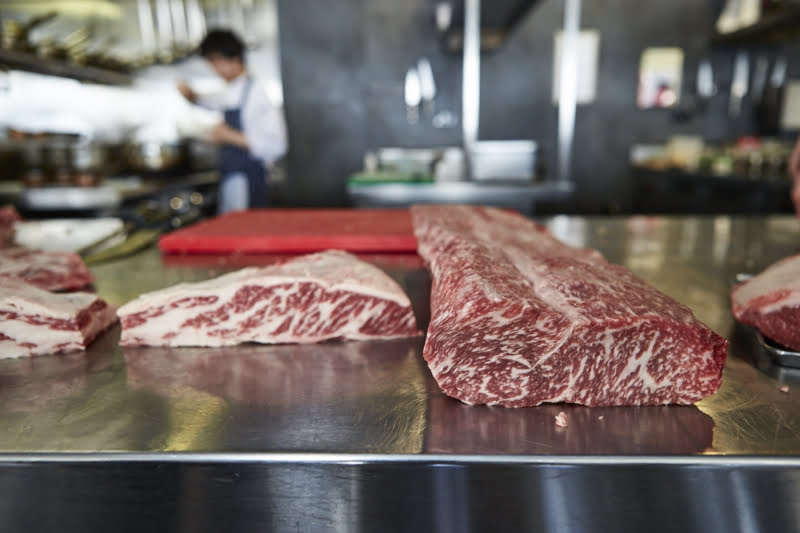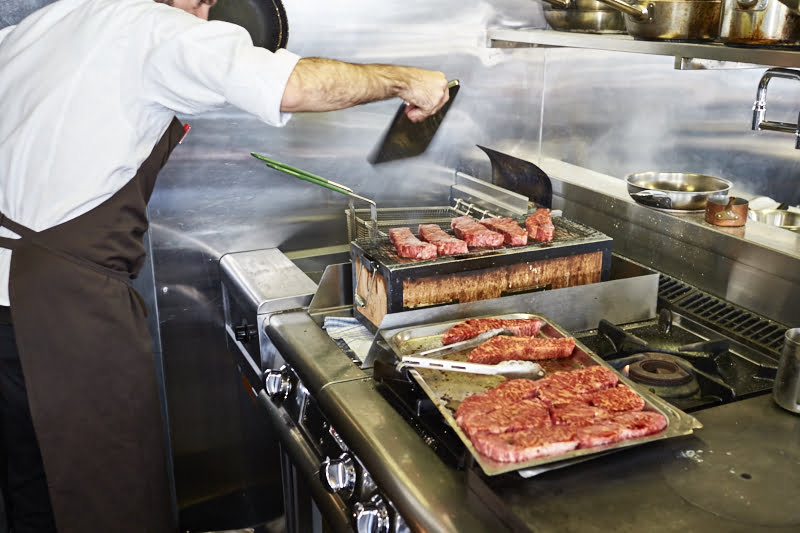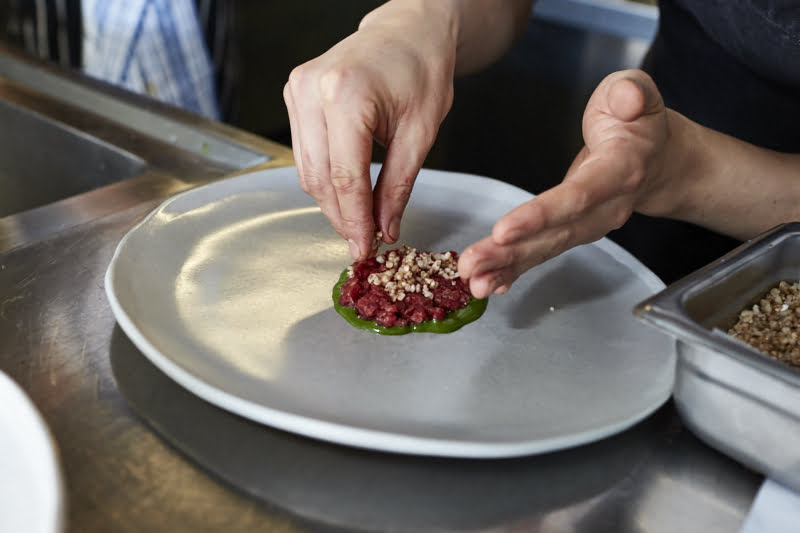Meat cuts are not just a Lady Gaga fashion accessory
For the meat-obsessed foodie, a visit to the local butcher can be a great joy. Ribs, sirloin and brisket, there are so many delights to be found. However for the uninitiated, choosing particular meat cuts can be a daunting prospect. But it needn’t be.
We asked Patrick Warmoll of the award-wining Jack’s Creek to help us out. As the head of this Wagyu and Black Angus beef-based business, Patrick sure knows a thing or two about about red meat. Indeed the company took out top honours last year for the World’s Best Steak. But more than that, Patrick’s family have been in the meat business since the early 1850s when they emigrated to New South Wales from Ireland.

What would be your advice to people who are just starting to cook red meat?
First and foremost selecting the right cut for the application is crucial. Pick a meat that has originated from southern Australia, (NSW, VIC) the British breeds and wagyu are softer and more tender. Then select the right meats. For steak eating choosing meat cuts like tenderloin (eye fillet), scotch fillet, sirloin work best. For slow cooking you don’t need the expensive cuts, use cuts like chuck and round steak, top side, skirt steak, oyster and blade steaks. The colour of the meat should be a nice pinkish colour and the marbling should be a fine cobweb like with a milky colour, good marbling adds flavour and the age of the meat aids in its tenderness, (should be min 21 days aged).

What are some popular meat cuts and what are the best way to use them?
Eye fillet, scotch fillet, Sirloin and rump steak. Most of these popular meat cuts benefit from being grilled on the BBQ or pan fried with a little salt and olive oil. Get the plate or pan very hot and sear the steak on both sides locking in the juices and flavour, then depending on the thickness and cut of meat, cook to desired tenderness (rare, medium, etc).

What is your favourite meat cut and why?
This is a difficult question due to the varied cuisines that Australians enjoy due to our great multiculturalism. I enjoy all meat cuts but at the moment have been really enjoying bone in ribeye (scotch fillet) steak cut at 2in thick. Having the bone in gives it a robust nutty flavour when cooked.

In your opinion is there a meat cut that is criminally underused? And what is the best way to prepare it?
In Australia, rump is a very popular cut and is normally cut from end to end into different portion sizing from 350g at the large end down to 200g at the tip. However this butchery method doesn’t allow it to be used to its full potential. If broken down to the 4 muscles, Rump Cap (used for roasting, thin slicing for a Japanese style application), Eye Of Rump (cut into 150g – 250g medallion steak) Centre Cut Rump (can be used for the typical blokey BBQ steak) and Rump Undercut (can be used ground up for burgers) this cut of meat becomes much more versatile.

What are some of the nutritional benefits of eating red meat?
Red meat contains heme iron, which is a type of iron that is absorbed more efficiently than the non-heme iron found in green vegetables. Protein is also found in red meat which helps build bones and muscles. Lean red meat contains vitamin B-12 for a healthy nervous system and B-6 for a strong immune system. Red meat also contains other B vitamins like niacin that aids in digestion, as well as riboflavin for healthy skin and eyes. Eating red meat also makes you happy!

Is there a knack for cutting and working with meat so that it remains tender?
Firstly the type of bread will determine the initial tenderness i.e. Wagyu and softer British breeds that are sourced from Southern Australia. Then selecting a tender meat cut like the eye fillet, known as being the most tender cut of beef. Ageing the beef has a big impact on how tender it is, aging it up to several weeks allow enzymes naturally existing in the meat to break down the muscle tissue, resulting in enhanced flavour and tenderness. It’s not just the cut of meat that defines how tender it is, it’s also how you cut it. Beef should be sliced across the grain rather than parallel with it, this helps make it easier to chew through. When grilling steak it is always best practice to bring the meat to room temp before cooking and also allow the meat to rest for up to 5 minutes after cooking so when cut it loses less juices and will be tastier and tender.

What is the difference between grain-fed and grass-fed beef?
The main difference is the way the cattle are finished. Grass fed cattle are raised and finished on pasture, grain fed cattle are raised on pasture and finished on a specially formulated high energy, high protein diet. Other differences are grain fed beef is juicier and more tender than grass fed, it has a higher fat content; higher fat levels deliver more flavours. Grain fed grades out higher in quality scoring and is desired by most palates. Grain fed beef is coveted by restaurants offering high grade marbled beef and allows for more consistency in carcass size and therefore more consistent portion sizes.
For further information, please visit jackscreek.com.au
Jack’s Creek
“Merrigal”
5538 Kamilaroi Highway
Breeza NSW 2381
Phone: (02) 5712 9800



